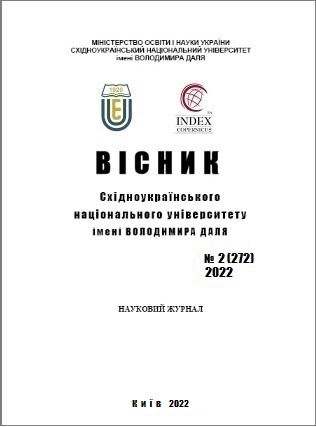Implementation of a system of remote access to information resources of computer laboratories
DOI:
https://doi.org/10.33216/1998-7927-2022-272-2-7-14Keywords:
VPN, Windows Server, computer training lab, distance learning, computer network, remote access, port, protocol, PPTPAbstract
The organization of learning computer laboratories in conditions of distance learning is associated with a number of issues, including the development and implementation of remote access to not only educational content but also resources of local network and service equipment: software and environments, servers, printers, digital devices, etc. Therefore, one of the main challenges in organization of distance learning for students, including IT specialties, is to create conditions for convenient access of students to the computer network of the university laboratory - ideally a complete simulation of work in the university computer laboratory with remote access. Despite the large number of papers dedicated to various aspects of distance learning, the problem of creating remote learning computer labs has not been sufficiently studied. The paper presents an analysis of existing approaches and principles of building a typical information structure of the learning computer laboratory. Based on the practical experience of using and modernizing such a system, a number of technical solutions aimed at organization of remote access to internal information resources of the learning computer laboratory are proposed. Of the many possible solutions for creating an information system with remote access, the three simplest and fastest options for their implementation are outlined. A number of options for organization of remote access were analyzed, in which the learning computer laboratory is built using the technology of redirection of individual ports to one node of the local network with various information, hardware and software resources, or several nodes, including one remote desktop server, web server and other resources with individual IP addresses.The main structural components of the remote access system based on VPN are studied and recommendations for their configuration and application are provided. The main features of VPN application using MikroTik router are given. The proposed approach allowed to reorganize the work of the learning computer laboratory and create new opportunities for the use of information resources by students and teachers of Luhansk Taras Shevchenko National University in conditions of distance learning that was introduced during the COVID-19 pandemic. The practical experience of using such an approach in 2020-2021 has proved its effectiveness.
References
1. DeustoLearningLab. URL: https://learninglab.deusto.es/(date of access: 02.05.2022).
2. Sysoieva S. DIGITALIZATION OF EDUCATION: PEDAGOGCIAL PRIORITIES. Education: Modern Dis-courses. 2021. No. 4. P. 14–22. URL: https://doi.org/10.37472/2617-3107-2021-4-02 (date of access: 04.05.2022).
3. Морзе Н.В. Моделі ефективного використання інфор-маційно-комунікаційних та дистанційних технологій навчання у вищому навчальному закладі. Інформаційні технології і засоби навчання. 2008. № 2 (6).
4. Стратегія розвитку вищої освіти в Україні на 2022 – 2032 роки. Міністерство освіти і науки України. URL: https://mon.gov.ua/storage/app/media/news/2022/04/15/VO.plan.2022-2032/Stratehiya.rozv.VO-23.02.22.pdf (дата звернення: 01.05.2022).
5. Теорія та практика змішаного навчання: монографія / В.М. Кухаренко та ін. Харків. Міськдрук, НТУ «ХПІ», 2016. 284 с.
6. Технологія розробки дистанційного курсу: навч.посіб. / В. Биков та ін. Київ: Міленіум, 2008. 324 с.
7. Щербина О.А. Нові засоби для оцінювання компе-тентностей в Moodle. Інформаційні технології і засоби навчання. 2016. № 55 (5). С. 96 – 104.

